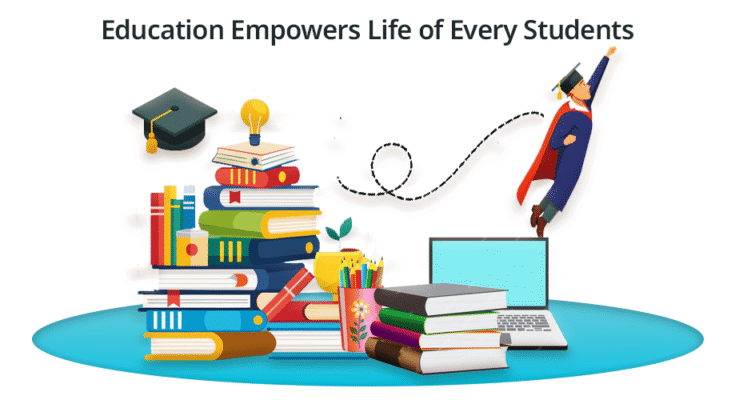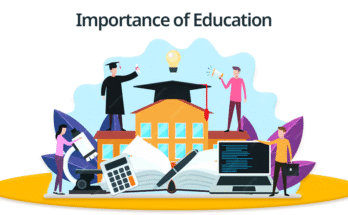Technology is changing how we learn. In the past, students used books and chalkboards. Today, they use tablets, laptops, and the internet. The role of technology in modern education is very big. It makes learning faster, easier, and more fun.
In this blog, you will learn how technology is helping students, teachers, and schools around the world.
What Is Educational Technology?
Educational technology means using tools like computers, apps, and the internet to teach and learn. It helps students understand better. It also helps teachers plan and share lessons more easily.
Examples of Technology in Education:
- Online classes (Zoom, Google Meet)
- Digital books and e-learning platforms (Khan Academy, Coursera)
- Educational games and apps
- Smartboards and projectors
- AI tools like ChatGPT for homework help
Why Technology Is Important in Education
Technology is important in modern education because it brings many benefits. It improves how students learn and how teachers teach.
1. Easy Access to Information
With the internet, students can find answers quickly. They don’t need to go to the library or wait for books. They can search for facts, videos, and articles anytime.
Example:
If a student doesn’t understand a math problem, they can watch a YouTube video to learn it step by step.
2. Learning from Anywhere
Thanks to online classes, students can learn from home, in a café, or even while traveling. All they need is a computer or phone and an internet connection.
This is helpful for:
- Students in remote areas
- People with disabilities
- Students who work or take care of family
3. More Fun and Interactive Lessons
Learning is no longer boring. With videos, games, and virtual reality, students can enjoy learning more. These tools help keep students interested and focused.
Example:
Instead of just reading about the solar system, students can explore it using a 3D app or virtual reality.
How Technology Helps Students
Technology supports students in many ways. It helps them learn better and faster.
H3: Personalized Learning
Every student is different. Some learn fast, and some need more time. Technology can give each student their own learning path.
Apps can:
- Give quizzes based on student level
- Track progress
- Offer extra help if needed
H3: Collaboration and Teamwork
With online tools, students can work together even if they are in different places. They can share ideas on Google Docs, join group chats, and present projects on Zoom.
H3: Improves Research Skills
Students learn how to search for information, check facts, and think critically. These are important skills for school and life.
How Technology Helps Teachers
Technology is not just for students. It also helps teachers do their jobs better.
H3: Better Lesson Planning
Teachers can find teaching resources online. They can use videos, slides, and worksheets made by others or create their own with AI tools.
H3: Easier Communication
Teachers can send updates to parents and students through apps, emails, or school platforms. This helps keep everyone connected.
H3: Saves Time
With tools like Google Forms or online grading apps, teachers can check tests and homework quickly. This gives them more time to focus on teaching.
Online Learning: A New Way to Study
Online learning became very popular during COVID-19. Many students stayed home and took classes on the internet.
Pros of Online Learning:
- Flexible time and place
- Replay recorded lessons
- Learn at your own speed
Cons of Online Learning:
- Not all students have good internet or devices
- Harder to stay focused
- Less social interaction
Even after the pandemic, online learning is still growing. Many schools now use a blended learning model (a mix of online and in-person).
Challenges of Using Technology in Education
While technology brings many good things, it also has some problems.
1. Not Everyone Has Access
Some students do not have laptops or fast internet. This is called the digital divide. It makes learning harder for poor or rural students.
2. Distractions
Phones and computers can distract students. Social media and games can take their attention away from lessons.
3. Teacher Training
Not all teachers know how to use technology well. Schools need to train teachers so they can use tech tools the right way.
Future of Technology in Education
Technology will become an even bigger part of education in the future. Here are some trends to watch:
H3: Artificial Intelligence (AI)
AI can help grade papers, suggest lesson ideas, or tutor students. It makes learning more personalized.
H3: Virtual Reality (VR)
VR can help students visit places like ancient Rome or explore science labs without leaving their home.
H3: Learning Analytics
These tools track how students learn and help teachers improve their lessons based on data.
Tips for Using Technology in Learning
Whether you are a student or a teacher, here are some helpful tips:
- Use trusted websites and tools
- Take breaks to avoid screen fatigue
- Set a schedule and stick to it
- Stay focused—close apps you don’t need
- Ask for help if you get stuck
Conclusion
Technology is changing education in many good ways. It helps students learn better, gives teachers more tools, and connects the classroom to the world. While there are challenges, the benefits are bigger. The role of technology in modern education is growing, and it will shape the future of learning.
SEO Keywords to Include:
- Role of technology in education
- Educational technology benefits
- Online learning advantages
- How technology helps students
- Future of technology in education
- Technology in modern classrooms
- Importance of technology in education



